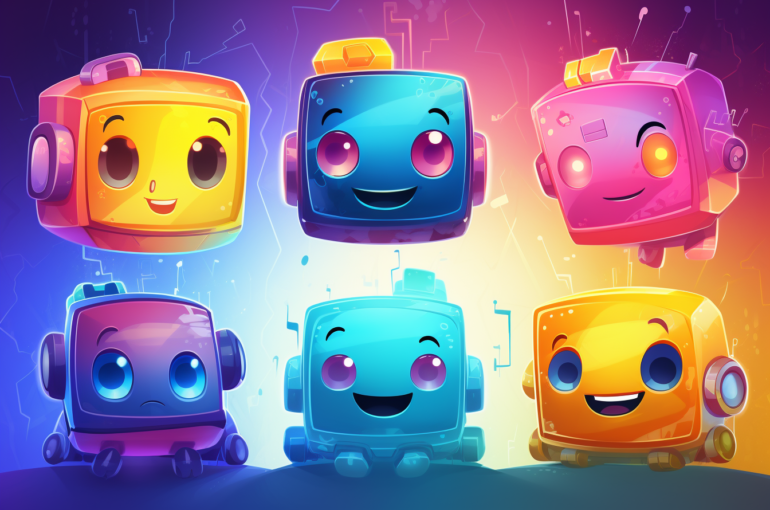The Importance of Creating a Chatbot Persona
The Importance of Creating a Chatbot Persona

The Importance of Creating a Chatbot Persona
In today’s digital era, businesses are constantly looking for ways to improve customer engagement and provide a more personalized user experience. One effective strategy that has gained popularity in recent years is the use of chatbots. Chatbots are AI-powered virtual assistants that can interact with users in a conversational manner, providing them with information, answering their queries, and even assisting them in making purchasing decisions.
While the functionality and accuracy of a chatbot are crucial, it is equally important to consider its personality. A chatbot persona refers to the character or identity that a chatbot embodies when interacting with users. Just like humans, chatbots can have different personalities, which can significantly impact the way users perceive and interact with them.
Understanding Different Archetypes for Chatbot Personalities
When creating a chatbot persona, it is essential to choose a personality archetype that aligns with your brand image and resonates with your target audience. Here are five common archetypes for chatbot personalities:
a. The Helpful Assistant
The helpful assistant is friendly, reliable, and always ready to provide assistance. This type of chatbot persona is focused on solving users’ problems and guiding them through the process. It offers helpful suggestions, recommendations, and step-by-step instructions to ensure a smooth user experience.
b. The Friendly Companion
The friendly companion is warm, empathetic, and builds a rapport with users. This chatbot persona aims to create a friendly and conversational experience, making users feel comfortable and valued. It uses casual language, jokes, and emojis to establish a more personal connection.
c. The Technical Expert
The technical expert is knowledgeable, precise, and highly skilled in a specific domain. This type of chatbot persona excels in providing accurate and detailed information. It can answer complex queries, offer in-depth explanations, and even provide technical support if required.
d. The Humorous Entertainer
The humorous entertainer is witty, funny, and always ready with a joke or a funny response. This chatbot persona aims to entertain users and create a lighthearted experience. It uses humor, puns, and pop culture references to engage users and keep the conversation enjoyable.
e. The Professional Advisor
The professional advisor is knowledgeable, authoritative, and trusted. This type of chatbot persona is ideal for businesses that provide professional advice or consultancy services. It offers expert recommendations, insights, and personalized suggestions based on the user’s specific needs and goals.
Choosing the Right Chatbot Persona for Your Business
When choosing a chatbot persona for your business, consider your target audience, brand values, and the purpose of your chatbot. Think about the type of user experience you want to create and the emotions you want to evoke in your users. A helpful assistant might be suitable for a customer support chatbot, while a humorous entertainer could work well for a casual gaming app.
It is also important to remember that a chatbot persona should be consistent across all platforms and channels. Whether a user is interacting with the chatbot on your website, mobile app, or social media, they should see the same personality and tone of voice.
Real-Life Examples of Successful Chatbot Personalities in Business
Several companies have successfully incorporated chatbots with well-defined personas into their business strategies. Here are some examples:
a. Art ilk: The Helpful Assistant
ART ilk, a leading e-commerce store that sells unique wall art prints, uses a chatbot persona that embodies a helpful assistant. The chatbot provides product recommendations, guides users through the purchasing process, and assists with any issues or concerns they may have. This chatbot has significantly improved customer satisfaction and sales conversion rates.
b. Uber Eats: The Friendly Companion
Uber has a chatbot persona that acts as a friendly companion. The chatbot engages with users in a conversational and casual manner, asks about their food preferences, and suggests personalized meal options. This chatbot has not only increased user engagement but also helped in building brand loyalty.
c. CDL Computers: The Technical Expert
CDL, an IT consultancy firm, utilizes a chatbot persona that portrays a technical expert. The chatbot answers users’ technical questions, provides troubleshooting assistance, and offers recommendations for software and hardware solutions. This chatbot has not only reduced the workload on the customer support team but also positioned the company as a reliable source of tech knowledge.
d. Comedy Hub Club: The Humorous Entertainer
Comedy Hub Club, has integrated a chatbot persona that acts as a humorous entertainer. The chatbot engages users with funny responses, witty jokes, and playful interactions. This chatbot has not only enhanced the user experience but also promoted social sharing and user retention.
e. LDE Debt Management: The Professional Advisor
LDE, a financial planning firm, has a chatbot persona that embodies a professional advisor. The chatbot asks users about their financial goals, provides personalized debt advice, and offers insights on savings and budgeting. This chatbot has not only attracted new customers but also positioned the company as a trusted financial advisor.
Getting It Right
By creating a well-defined chatbot persona, businesses can enhance customer engagement and provide a more personalized and enjoyable user experience. Whether you choose a helpful assistant, a friendly companion, a technical expert, a humorous entertainer, or a professional advisor, ensure that your chatbot persona aligns with your brand values and resonates with your target audience. Remember, a chatbot persona is not just a character, but an extension of your brand’s personality.










